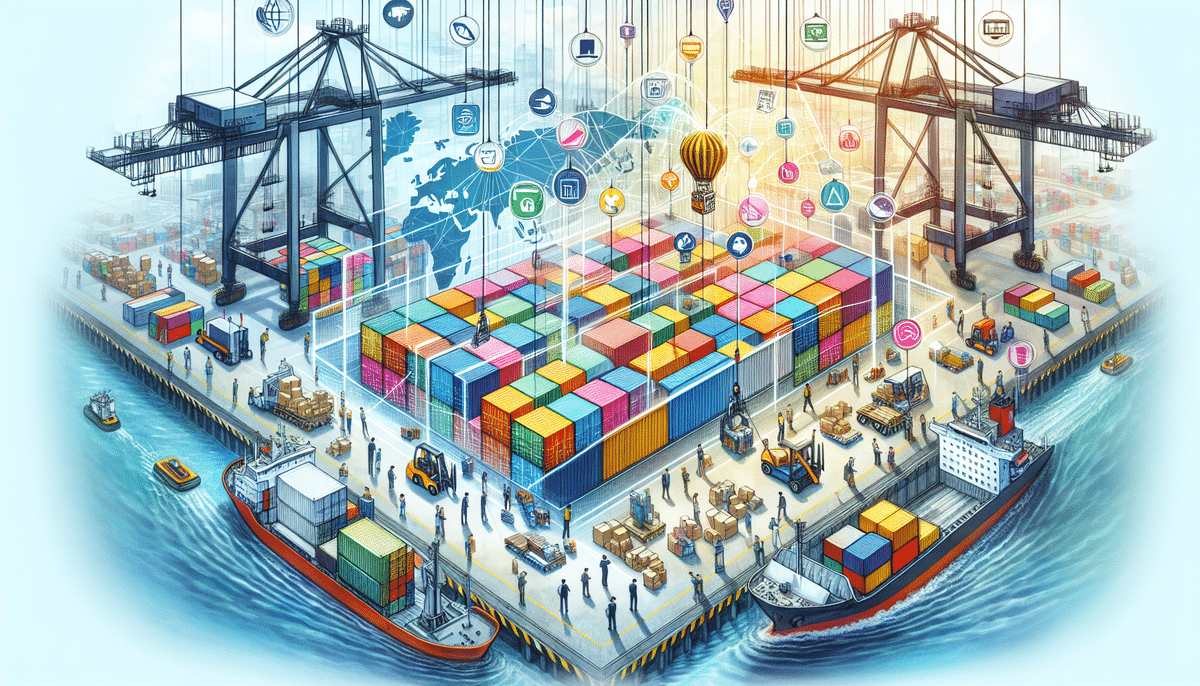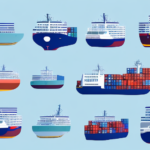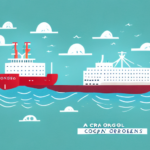Understanding LCL (Less-than-Container Load) Shipping
LCL shipping has become an increasingly popular method for small to medium-sized businesses aiming to ship smaller quantities of goods globally. Unlike FCL (Full Container Load) shipping, where the entire container is dedicated to one shipper, LCL shipping consolidates cargo from multiple shippers to fill a container. This method is preferred by businesses that do not require an entire container at once, offering a cost-effective solution to their logistics needs.
What is LCL Shipping and How Does It Work?
LCL shipping involves combining small shipments from various shippers to fill a container before it’s transported. A freight forwarder or consolidator manages the entire process, from pickup of the goods to final delivery at the destination port. The consolidator gathers multiple shipments from different shippers, fills a container, and transports it via ocean freight. Upon arrival, the container is deconsolidated, and each shipper’s items are unpacked and delivered to their final destinations.
LCL shipping is a cost-effective option for small businesses or individuals without enough cargo to fill an entire container. By sharing shipping costs with other shippers, it becomes more affordable. However, LCL shipping can take longer than FCL shipping due to the additional time required for consolidation and deconsolidation. Partnering with a reliable freight forwarder or consolidator is crucial to ensure your goods are handled properly and delivered on time.
Advantages of LCL Shipping for Small Businesses
LCL shipping offers several advantages for small businesses, particularly those involved in e-commerce:
- Cost-Effective: Small businesses can ship smaller quantities without bearing the cost of an entire container, reducing overall shipping expenses including packing, handling, and storage.
- Flexibility: Businesses can adjust shipment frequency to meet their needs, minimizing inventory costs.
- Diverse Cargo Handling: LCL shipping accommodates a variety of goods, including hazardous materials, perishable items, and oversized cargo, allowing businesses to expand their product offerings.
- Environmental Benefits: Sharing container space reduces the number of containers needed, lowering carbon emissions and minimizing environmental impact.
According to the 2023 Shipping Logistics Report, LCL shipments have seen a 15% increase in usage among e-commerce businesses, highlighting its growing popularity.
Common Types of Cargo Shipped via LCL
LCL shipments are suitable for small volumes of various commodities, including consumer goods, apparel, electronics, and even hazardous materials. However, certain commodities, such as perishable goods, may not be ideal for LCL shipping due to extended shipping times that could exceed the product's shelf life. Additionally, bulky or oversized items might incur costs that negate the savings compared to FCL shipping.
Another consideration is the potential for damage. Since LCL shipments involve multiple shipments consolidated into one container, there is a higher risk of damage from handling and movement during transit. Proper packaging and securing of goods are essential to minimize this risk.
Despite these limitations, LCL shipping remains a cost-effective option for businesses and individuals without sufficient cargo to fill an entire container. It also offers more flexibility in scheduling and routing, making it easier to manage shipments to the same destination. Partnering with a reputable freight forwarder is crucial for optimizing your shipping options.
How to Calculate LCL Shipping Rates and Costs
The cost of LCL shipping is influenced by several factors, including the cargo's weight, dimensions, origin, and destination. Shipping rates are typically based on freight charges per cubic meter or by weight. Additional fees may apply for handling, documentation, customs clearance, and freight insurance. Import duties and taxes at the final destination can also significantly impact the total shipping cost.
Transportation mode is another factor affecting LCL shipping rates. If cargo needs to be transported by truck or rail to the port of departure, or from the port of arrival to the final destination, additional transportation costs will apply. It’s essential to account for all these variables when calculating the total cost of LCL shipping.
Utilizing online shipping calculators can help estimate costs accurately based on your specific shipment details.
Tips for Properly Packing and Labeling LCL Shipments
Proper packing and labeling are critical to ensure safe delivery of LCL shipments. Here are some best practices:
- Use Durable Packaging: Utilize sturdy materials like corrugated boxes, bubble wrap, and packing peanuts to protect fragile items.
- Fill Empty Spaces: Prevent shifting during transit by filling any voids with cushioning materials.
- Accurate Labeling: Clearly label cargo with the commodity name, weight, dimensions, and any hazardous materials indicators to expedite documentation processing and ensure correct delivery.
- Include Essential Information: Ensure labels include both the shipper’s and consignee’s names and addresses, as well as port of origin and destination.
For shipments containing hazardous materials, labels must include the appropriate hazard class and UN number to comply with international shipping regulations.
Differences Between LCL and FCL (Full Container Load) Shipping
Understanding the differences between LCL and FCL shipping is essential for selecting the right method for your needs:
- Volume: LCL is suitable for smaller volumes, while FCL is ideal for larger shipments that require an entire container.
- Cost Structure: LCL charges are based on cargo weight and volume, making it more cost-effective for smaller shipments. FCL charges are based on the full container load, regardless of the space used.
- Security: FCL offers greater security as the container is sealed and only opened at the destination, reducing the risk of damage or theft. LCL shipments are more vulnerable due to consolidation with other cargo.
- Transit Times: FCL generally has shorter transit times since containers are shipped directly without stops for consolidation or deconsolidation. LCL may experience longer transit times due to these additional processes.
Choosing between LCL and FCL depends on factors such as shipment size, cost considerations, security needs, and transit time requirements.
Factors That Can Affect LCL Shipment Timelines and Delivery Dates
Several factors can impact the timelines and delivery dates of LCL shipments:
- Port Congestion: Busy ports can lead to delays in loading and unloading containers.
- Labor Strikes: Strikes among port workers or transportation staff can halt operations temporarily.
- Adverse Weather Conditions: Storms or extreme weather can disrupt shipping schedules.
- Customs Clearance: Delays in documentation processing and customs inspections can extend delivery times.
- Space Availability: Limited space on carriers during peak seasons can lead to shipment delays.
- Type of Cargo: Special handling requirements for hazardous or oversized items may cause additional delays.
To mitigate these risks, businesses should:
- Choose reputable carriers with reliable track records.
- Pre-clear customs documentation to avoid processing delays.
- Monitor shipments in real-time using advanced tracking systems.
Best Practices for Choosing a Reliable LCL Shipping Provider
Selecting a reliable LCL shipping provider is crucial for ensuring seamless logistics operations. Consider the following best practices:
- Experience and Reputation: Assess the provider’s track record and customer reviews to gauge reliability.
- Cost-Effectiveness: Compare rates and ensure transparency in pricing to avoid hidden costs.
- Coverage Options: Ensure the provider offers routes and services that align with your shipping needs.
- Additional Services: Look for providers that offer documentation processing, cargo insurance, and other value-added services.
- Customer Service: A responsive and knowledgeable customer service team is essential for addressing any issues that arise during shipping.
- Tracking Systems: Reliable real-time tracking capabilities allow you to monitor your shipment’s progress and receive timely updates.
For more information on selecting a reliable provider, visit our LCL Shipping Tips page.
How to Track and Manage Your LCL Shipments in Real-Time
Tracking and managing LCL shipments in real-time can be challenging due to the complex logistics involved. However, several technology solutions can assist:
- Shipment Tracking Software: These platforms allow businesses to monitor the progress and location of their shipments, view documentation updates, and receive notifications about delays or issues.
- Real-Time Tracking Tools: Advanced tracking systems provide visibility into each stage of the shipping process, enhancing transparency and control.
Implementing these technologies can significantly improve shipment management and ensure timely delivery. Consider investing in a robust shipment tracking system to enhance your logistics operations.
Common Challenges Associated with LCL Shipping and How to Overcome Them
LCL shipping presents several challenges, including:
- Unpredictable Freight Charges: Variable costs can complicate budgeting and expense management.
- Longer Transit Times: Additional steps in consolidation and deconsolidation can extend delivery times.
- Documentation Processing Issues: Errors or delays in paperwork can lead to customs clearance problems.
- Customs Clearance Delays: Inefficient processing can hold up shipments at ports.
To overcome these challenges, shippers should:
- Choose reputable carriers with transparent pricing structures.
- Ensure accurate and complete documentation to facilitate smooth customs clearance.
- Package goods correctly to minimize the risk of damage during transit.
- Work with experienced freight forwarders or consolidators who understand the shipping process thoroughly.
Future Trends and Developments in the LCL Shipping Industry
The LCL shipping industry is poised for growth, driven by the expansion of e-commerce and the globalization of businesses. Future trends and developments include:
- Automated Cargo Handling: Automation technologies will streamline cargo handling processes, increasing efficiency and reducing errors.
- Blockchain Technology: Implementing blockchain can enhance transparency, security, and traceability in shipping transactions.
- Enhanced Tracking Tools: Advances in real-time tracking technologies will provide deeper visibility into shipment status and location.
- Sustainability Initiatives: Increased focus on reducing carbon emissions and adopting eco-friendly practices will shape future shipping operations.
These innovations will improve operational efficiency, security, and sustainability within the LCL shipping industry. Businesses can anticipate greater transparency and enhanced shipment management capabilities through these advancements.






















